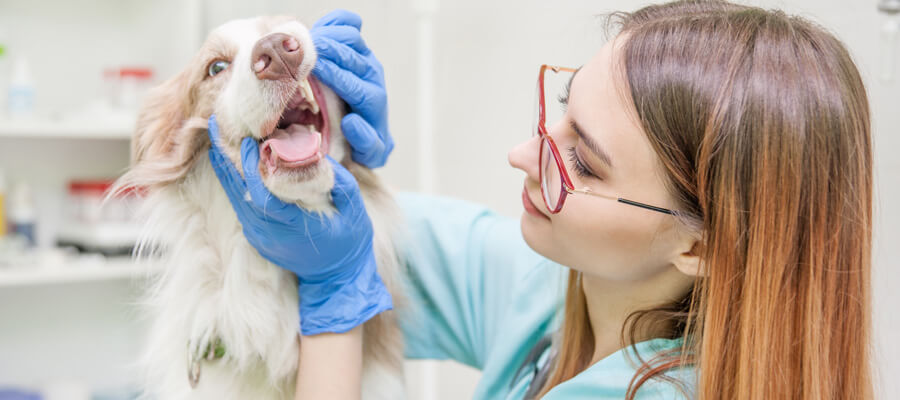During every exam at Intermountain Pet Hospital, our veterinarians will thoroughly examine a pet’s teeth to check for overall dental health of the teeth and the gums. If the doctor determines that a pet’s teeth are at an index score of 2 or 3, they will recommend a professional dental cleaning.
But what do the scores mean? Below are each dental index scores and what they mean in terms of your pet’s overall dental health.
- Index Score of 0 — There is no observable calculus (calcified plaque) on the teeth, and the gums are pink and healthy. If your pet is in this category, keep doing the home dental health care your pet is used to.
- Index Score of 1 — Scattered calculus visibly covers less than one-third of the tooth but NOT on the gum line. Gums are still pink and healthy. At this point, the calculus that has built up can be reversed with a good and consistent home dental care routine.
- Index Score of 2 — Calculus covering one-third to two-thirds of the tooth. Calculus is on the gum line, and gums are inflamed with gingivitis. Once a pet has reached this stage, a professional dental cleaning is strongly recommended on top of maintaining a consistent home dental care routine.
- Index Score of 3 — Calculus covering greater than two-thirds of the tooth and is on the gum line. Gums are inflamed, and the chance of periodontal disease being present is likely.
Home Dental Care
Below are 4 of the best ways to take care of your pet’s teeth in between dental cleans.
- Brushing Teeth Daily — The absolute best way to prevent the buildup of tartar is daily brushing. It takes 24 to 48 hours for plaque to be calcified into tartar, so daily brushing is the best way to remove food particles and bacteria.
- Dental Chews — Dental chews are 70% effective in preventing dental disease. To be effective, the chews have to be used daily with a 5- to 10-minute chewing time. The best chews to use will have the VOHC (Veterinary Oral Health Council) seal on the packaging.
- Water Additives — If your pup or kitty won’t let you brush their teeth and are not interested in chewing on anything, using a water additive might be a good way for you to go. Using a water additive is 55% effective at preventing dental disease by preventing bacterial growth in your pet’s mouth.
- Dental Diets — Dental diets are 39% effective in preventing dental disease. However, the trick to a dental diet is that the pet’s diet has to be a 100% VOHC-approved dental diet. Using the dental diet kibbles as treats will do nothing to help with a pet’s overall dental health.
It’s important to point out that if you choose to give your pet a dental diet while also giving them a dental chew every day, this does not give your pet a 109% effectiveness at preventing dental disease. We wished it worked like that, but alas, it does not. If your pet does the dental diet and chews, the 2 methods will have a combined 70% effectiveness rate.
